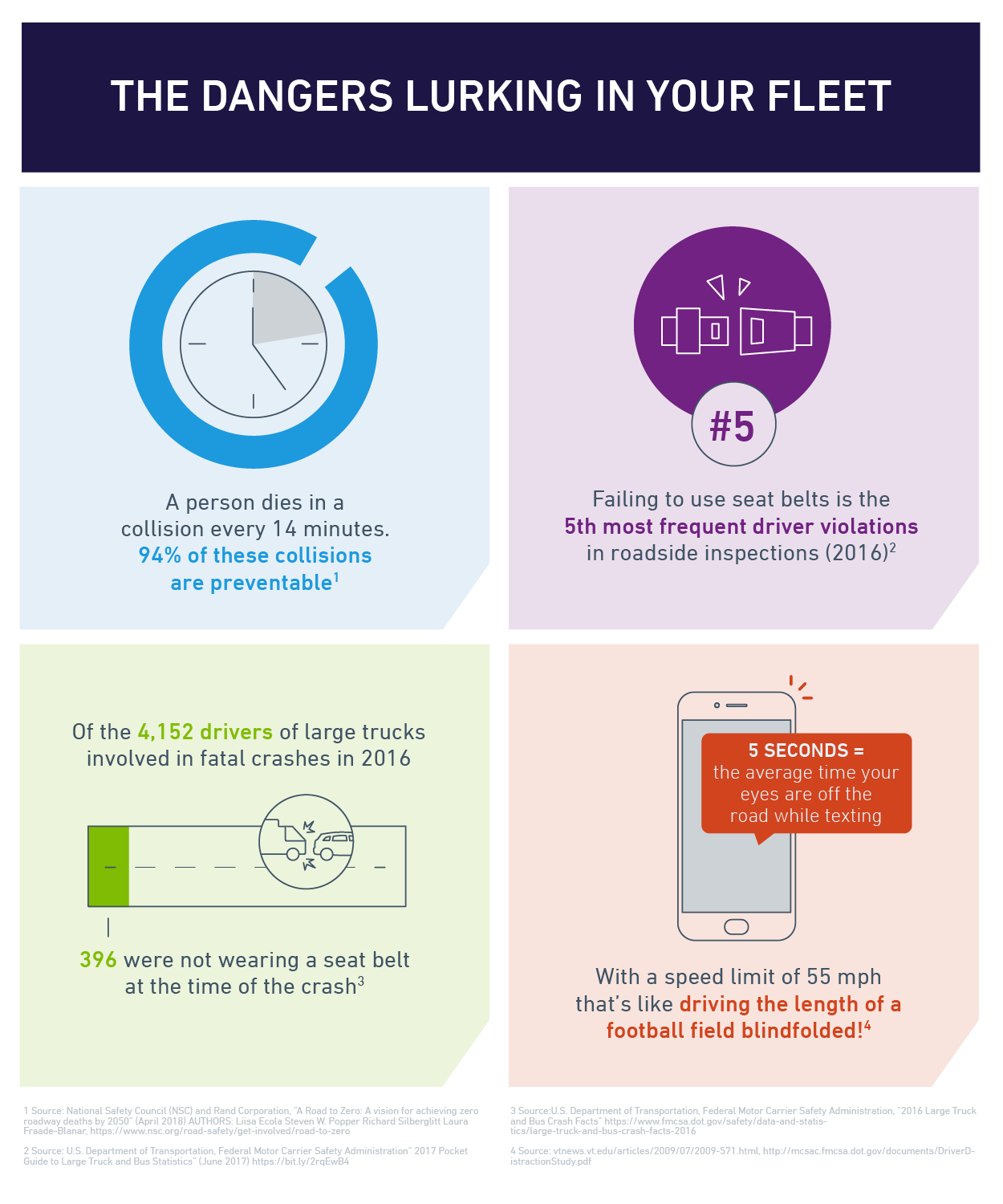When fleet managers review footage of their drivers for the first time after onboarding a video-based safety solution, their initial reaction is often wow. They’re stunned to see some drivers engaged in unsafe behaviors such as texting, completing paperwork, and even eating with a fork and knife while driving.
Often there won’t be any reports of unsafe driving behavior, and it is assumed that drivers are adhering to the company’s safety policies. But often video will suggest otherwise.
Every day, a person dies in a collision every 14 minutes. According to the NHTSA, 94 percent of these fatalities are preventable.
After analyzing 100 billion miles of driving data, the Lytx data team discovered that many seemingly minor infractions, such as not wearing a seatbelt, put a driver at risk of a collision. However, when you combine that with other habitual behaviors, such as eating in the cab, the chances of a major collision increase significantly. The Lytx data team found that for every one fatal accident, drivers engaged in 190 acts of risky behavior—behaviors that are often preventable, such as using a cell phone.
It’s hard to know if a driver’s behavior is the root cause of a collision, and you can’t take action on what you don’t know. It’s worth paying close attention to behavior, though. Taking action on risky behavior through proactive coaching can help prevent future incidents.
Del Lisk, VP of Safety Services for Lytx, said that seat belt violations are the most frequent surprise for fleet operators. “Drivers of large commercial vehicles tend to have the greatest number of seat belt violations,” he said. “They assume that if they’re in a collision with a smaller vehicle, they’ll walk away without a scratch, so they don’t think it’s important to buckle up.” In fact, failure to wear a seat belt is the fifth most common violation found in roadside inspections.
This false sense of confidence can have deadly consequences.
According to a 2016 study by the Federal Motor Carrier Association (FMCSA), of the 4,152 drivers of large trucks involved in fatal crashes in 2016, 396 weren’t wearing a seat belt at the time of the crash. Thirty-two percent of those drivers were completely or partially ejected from the vehicle.
Perhaps even more dangerous, are behaviors that cause drivers to take their eyes off of the road. The NHTSA reports that a driver talking on a mobile phone looks away from the road for 3.8 seconds. A driver sending a text looks away for a whopping five seconds. At a speed of 55 miles per hour, this is like driving the entire length of a football field—blindfolded. These distractions have consequences: the risk of a collision increases 23-fold while texting, and seven times while simply reaching for a device.
Lisk explains that cell phone use has become so second nature that sometimes drivers don’t even realize the impact texting has on their driving. When drivers watch themselves on video during coaching sessions, they’re often shocked to see the length of time they’re distracted by their phones.
While video allows fleet owners to identify problems they didn’t know they had, Lisk warns against using the footage as grounds for punishment.
“There is the potential for fleet operators to react harshly when they see their drivers engaged in unsafe behaviors,” he said. “Their initial impulse might be to discipline employees, or even fire them.” The good news is that unsafe driving is often the result of ingrained habits that can be successfully changed with effective coaching. These types of events should be seen as an opportunity to retrain drivers so they’re more likely to be successful and safe on the job.
